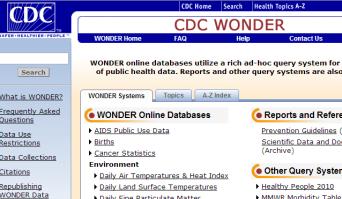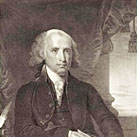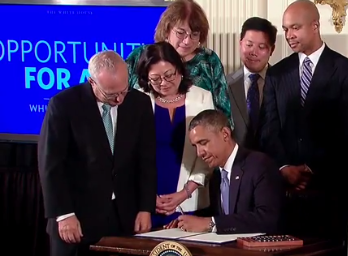 CDC (previously Centers for Disease Control; now Centers for Disease Control and Prevention, but still retaining just the three letters) is the primary federal agency responsible for protecting public health in the United States. Its scientists and other researchers collect data in the United States and throughout the world to track diseases, investigate real and potential outbreaks, detect and minimize germs and other risk factors, and deal with just about every kind of health-related emergency.
CDC (previously Centers for Disease Control; now Centers for Disease Control and Prevention, but still retaining just the three letters) is the primary federal agency responsible for protecting public health in the United States. Its scientists and other researchers collect data in the United States and throughout the world to track diseases, investigate real and potential outbreaks, detect and minimize germs and other risk factors, and deal with just about every kind of health-related emergency.
CDC WONDER
 CDC WONDER (the slightly strained acronym is short for “Wide-ranging ONline Data for Epidemiologic Research”) is an online public information health system created by CDC. It provides an integrated, one-stop point of access for the Morbidity and Mortality Weekly Report (MMWR), prevention guidelines, and numerous other CDC reports and guidelines. There is also a vast collection of statistics related to public health.
CDC WONDER (the slightly strained acronym is short for “Wide-ranging ONline Data for Epidemiologic Research”) is an online public information health system created by CDC. It provides an integrated, one-stop point of access for the Morbidity and Mortality Weekly Report (MMWR), prevention guidelines, and numerous other CDC reports and guidelines. There is also a vast collection of statistics related to public health.
These are a few of the topics you can find information on here:
- Births and deaths, including cause of death
- Risky behaviors
- Incidents of cancer, AIDS, diabetes, and many other diseases
- Hospital discharges
Each data set can be investigated through a system of menus, search boxes, and fill-in-the-blank request forms. When the data is retrieved, it can be viewed online or exported into a word processor, spreadsheet, or statistical analysis program. If you wish to report an error or other problem, need technical assistance, or just want to make a comment, there is a customer support team to help you.
In addition to providing the general public with access to information from the CDC, this database provides fast, simplified access to timely data that doctors, researchers, and administrators can use for investigating public health concerns, setting priorities, making decisions, allocating resources, and evaluating programs.
PHIL: Public Health Image Library
 It has been said that a picture is worth a thousand words, and the field of public health is a prime example of an area of knowledge where it is often easier to communicate through images rather than through text. The Public Health Image Library, affectionately known as PHIL, is a central database providing access to CDC’s photographs, illustrations, and videos. Public health professionals, journalists, scientists, teachers, students, and authors can all find a wealth of imagery here ready to use in articles, lectures, textbooks, and public health messages.
It has been said that a picture is worth a thousand words, and the field of public health is a prime example of an area of knowledge where it is often easier to communicate through images rather than through text. The Public Health Image Library, affectionately known as PHIL, is a central database providing access to CDC’s photographs, illustrations, and videos. Public health professionals, journalists, scientists, teachers, students, and authors can all find a wealth of imagery here ready to use in articles, lectures, textbooks, and public health messages.
Images can be searched by keyword, image type, and subject matter. If you really want to get specific, you can also search by date the image was created or uploaded, or by the CDC location, sub-agency, or personnel associated with the image.
Most of the images are in the public domain, although some are protected by copyright. A fair use statement is provided with each image to let you know the copyright status. You can even restrict your search to only public domain products.
Solve the Outbreak
 If you’d like to have a taste of what it’s like to be a CDC researcher, download the Solve the Outbreak app and see if you have what it takes to be a Disease Detective. This app provides various realistic outbreak scenarios, providing you an opportunity in each case to figure out what is happening, why, how it started, and how it is spreading. Download the app to your tablet or phone and become the star of your own version of CSI!
If you’d like to have a taste of what it’s like to be a CDC researcher, download the Solve the Outbreak app and see if you have what it takes to be a Disease Detective. This app provides various realistic outbreak scenarios, providing you an opportunity in each case to figure out what is happening, why, how it started, and how it is spreading. Download the app to your tablet or phone and become the star of your own version of CSI!
Preparedness 101: Zombie Pandemic
 Zombies have been all the rage for several years now in movies, TV shows, comic books, and other popular media. CDC has prepared an emergency preparedness campaign around the theme of a zombie apocalypse, using humor to engage audiences and deliver a message of deadly serious import. It’s an unlikely event to say the least, but if you’re prepared for a zombie apocalypse, surely you’ll be prepared for anything!
Zombies have been all the rage for several years now in movies, TV shows, comic books, and other popular media. CDC has prepared an emergency preparedness campaign around the theme of a zombie apocalypse, using humor to engage audiences and deliver a message of deadly serious import. It’s an unlikely event to say the least, but if you’re prepared for a zombie apocalypse, surely you’ll be prepared for anything!
Here are some downloadable zombie products to help teach emergency preparedness:
Would You Like to Know More?
These products provide barely a glimpse of the rich treasure available from CDC. Here are a few more examples of the plethora of informative and entertaining products available on the CDC Web site:
To learn more about health in the United States, visit HealthData.gov for information about Medicaid, Medicare, drugs and other treatments, biomedical research, safety, health-care administration, health-care costs, and much more.
Illustrations: CDC headquarters, PHIL sample image, Disease Detective badge, zombie apocalypse illustration, and CDC WONDER opening screen courtesy of CDC Web site.
Article by Bobby Griffith.
 The Senate Select Committee on Intelligence has released the “Foreword,” “Findings and Conclusions” and “Executive Summary”—a total of over 500 pages—from its Committee Study of the Central Intelligence Agency ‘s Detention and Interrogation Program. The full report is more than 6700 pages long and remains classified, although it is an official Senate report.
The Senate Select Committee on Intelligence has released the “Foreword,” “Findings and Conclusions” and “Executive Summary”—a total of over 500 pages—from its Committee Study of the Central Intelligence Agency ‘s Detention and Interrogation Program. The full report is more than 6700 pages long and remains classified, although it is an official Senate report.
 Presidential Proclamation
Presidential Proclamation On May 10, 2011 they officially launched the
On May 10, 2011 they officially launched the  The official election day is November 4 this year, but UNT students, faculty, and staff who live in Denton County will have an opportunity to beat the crowds and vote early in the November 4, 2014 General Election without even leaving the Denton campus. Other voters from the community who are registered in Denton County will also be allowed to vote early on the UNT Denton campus.
The official election day is November 4 this year, but UNT students, faculty, and staff who live in Denton County will have an opportunity to beat the crowds and vote early in the November 4, 2014 General Election without even leaving the Denton campus. Other voters from the community who are registered in Denton County will also be allowed to vote early on the UNT Denton campus.
 The delegates had a complex, delicate task ahead, and precautions were taken to insure secrecy so that everyone would be able to speak his mind honestly and change his mind freely as discussions progressed. Heavy curtains were drawn, and windows were nailed shut. The notoriously bibulous and garrulous Benjamin Franklin was accompanied during public excursions by chaperones charged with making sure he wouldn’t inadvertently reveal too much. James Madison took extensive
The delegates had a complex, delicate task ahead, and precautions were taken to insure secrecy so that everyone would be able to speak his mind honestly and change his mind freely as discussions progressed. Heavy curtains were drawn, and windows were nailed shut. The notoriously bibulous and garrulous Benjamin Franklin was accompanied during public excursions by chaperones charged with making sure he wouldn’t inadvertently reveal too much. James Madison took extensive  On September 17, 1787 the final draft of the
On September 17, 1787 the final draft of the  In commemoration of these momentous events, Congress has designated September 17 as
In commemoration of these momentous events, Congress has designated September 17 as  Pocket-size editions of the
Pocket-size editions of the 
 Two hundred years ago, while the American lawyer and Sunday poet Francis Scott Key was negotiating the release of certain prisoners from the British during the War of 1812, circumstances compelled him to remain on board a British ship and watch helplessly as Fort McHenry was bombarded during the Battle of Baltimore on the night of September 13 through 14, 1814. Heartened by the sight of the American flag still waving the following morning, Key was inspired to write his most famous lyric, “
Two hundred years ago, while the American lawyer and Sunday poet Francis Scott Key was negotiating the release of certain prisoners from the British during the War of 1812, circumstances compelled him to remain on board a British ship and watch helplessly as Fort McHenry was bombarded during the Battle of Baltimore on the night of September 13 through 14, 1814. Heartened by the sight of the American flag still waving the following morning, Key was inspired to write his most famous lyric, “

 The UNT
The UNT 

 CDC
CDC CDC WONDER
CDC WONDER It has been said that a picture is worth a thousand words, and the field of public health is a prime example of an area of knowledge where it is often easier to communicate through images rather than through text. The
It has been said that a picture is worth a thousand words, and the field of public health is a prime example of an area of knowledge where it is often easier to communicate through images rather than through text. The  If you’d like to have a taste of what it’s like to be a CDC researcher, download the
If you’d like to have a taste of what it’s like to be a CDC researcher, download the  Zombies have been all the rage for several years now in movies, TV shows, comic books, and other popular media. CDC has prepared an
Zombies have been all the rage for several years now in movies, TV shows, comic books, and other popular media. CDC has prepared an 
 Did you ever leave a job and forget to pick up your last paycheck? Maybe you never collected your security deposit after moving from an apartment, or perhaps you have a rebate coming for a computer you purchased decades ago, or a refund for an overcharge on a long-forgotten electric bill.
Did you ever leave a job and forget to pick up your last paycheck? Maybe you never collected your security deposit after moving from an apartment, or perhaps you have a rebate coming for a computer you purchased decades ago, or a refund for an overcharge on a long-forgotten electric bill.